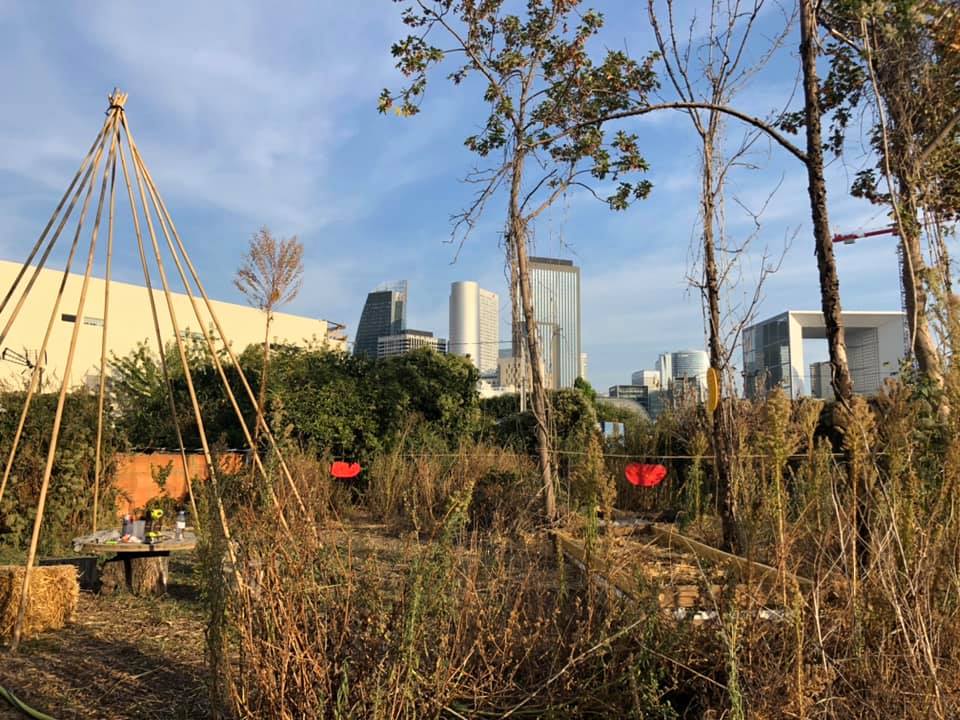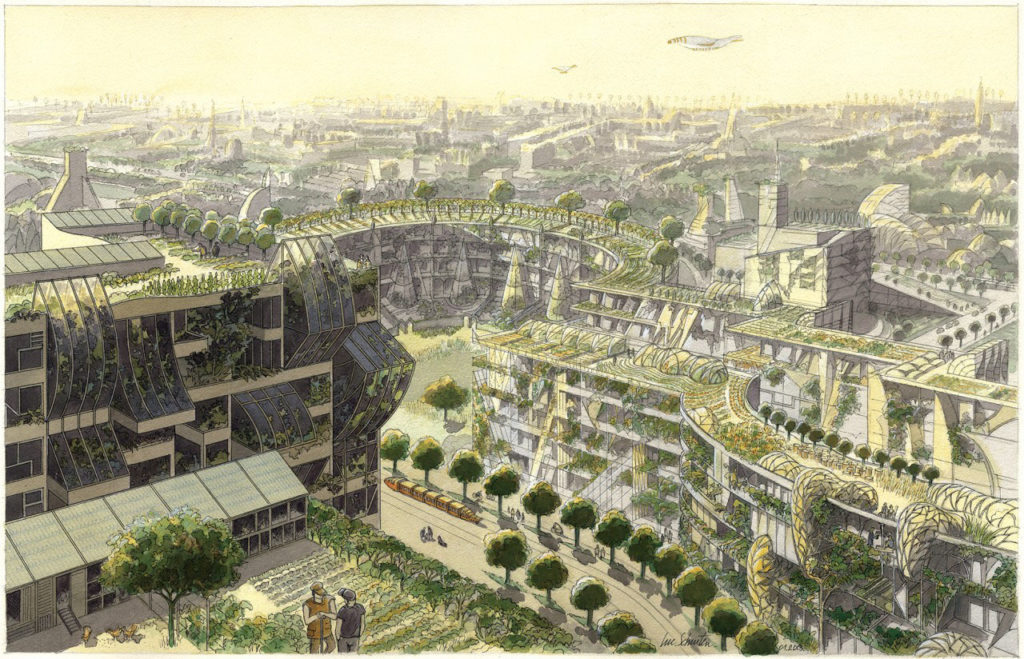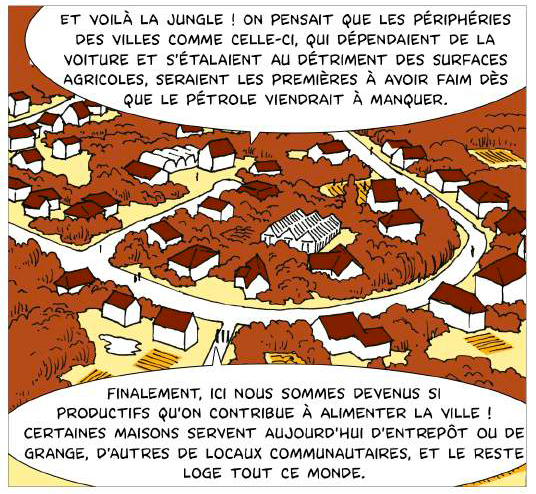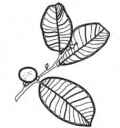Key Ideas:
Our aim in France is to create biomimetic food forests based on a synergy of best practices in reforestation, agroforestry and biomimicry. We envision establishing these multi-functional forests on small plots of land all over the country – in urban, semi-urban as well as strategic rural areas – in order to help meet the many challenges facing our planet today, and especially to: reinforce biodiversity, create viable local food production opportunities, offset the heat island effect in urbanised areas, mitigate against climate change, and help reconnect citizens of all ages with the wonders and importance of nature and trees.
In urbanised areas, we envision creating a sort of forest “acupuncture”, where an array of small reforested “nerve points” in public space can, when taken together, have a wide-reaching impact on the wellbeing of these areas and their residents. In this way, the old adage certainly rings true: “the whole is greater than the sum of its parts”.
Imagine a Forest…
A small exercise to envision what a nourishing forest could look like
Imagine a confinement, an extreme heatwave, or a significant economic crash … with the events of 2020 this is very easy to not only imagine, but also to live. So now see this repeating, and with each new event an associated feeling that these episodes are becoming a normal part of our everyday life… And so increasingly, people seek to escape the “urban trap” to return to the countryside. But so many more people do not have this option…
Now imagine some small wild forests interspersed in the parks, the vacant industrial zones and the undeveloped areas of cities and their surrounds. Small islands of forests, dense and rich in biodiversity, where mushrooms, berries, fruits, roots and a range of animals thrive. Aesthetic refuges of coolth, of escape, of wonder, where we can disconnect from everyday life and reconnect with ourselves and the magnificent natural world of which we are an intrinsic part.
Understand that the species planted in these forests have been carefully selected – they are well adapted locally and they are also capable of producing a range of benefits for both humans and nonhumans alike. These forests are the fruits of biomimetic reflection, mimicking mature forest ecosystems and providing invaluable ecological functions and services, while also producing food and nourishment for the mind, body and spirit.
In cities, a network of small biomimetic food forest acupuncture points enable numerous benefits far beyond the small surface each occupies – every “nerve point” contributes to greater health and resilience for the city and its inhabitants as a whole.
No-matter their size, their level of production or their prominence within a city, these forests can be found at the confluence of a multitude of needs and services, activities and learning initiatives. And when stress mounts, you have a haven of calm and beauty, a “breathing space” just a short walk away. A real and easily-accessible escape within busy city life.
Such forest points can inspire a reconnection with the living world by offering an array of educational and recreational opportunities to residents of urban and semi-urban areas. They can also help strengthen the local social fabric and nurture a sense of community by providing shared creative spaces for public use and benefit.
We see a sober urgency to develop initiatives such as biomimetic nourishing forests – of varying sizes, in a multiplicity of contexts, and designed for a number of specific uses – in order to serve the natural and social needs, not to mention the overall health, of our planet today.

Technical Aspects and Details:
Guided by Biomimicry
Our biomimetic approach will mimic mature micro-ecosystems inspired by local primary forests, but will densify and arrange the different functional elements of the system in order to increase the diversified production of food and other forest benefits (excluding wood production).
This includes such aspects as incorporating a variety of organisms with complementary traits to ensure all essential ecosystem functions are well provided for, promoting species associations rather than their competition, and using complex trophic chains to control pests.
In an urban context, a biomimetic forest will seek to situate itself within a greater “system” extending beyond the confines of its trees by developing connections with the associated urban tissue (for example receiving material flows in the form of organic waste from nearby restaurants and linking with local schools).
Furthermore, an overarching aim behind these forests is providing a “commons” that not only contributes to local food production, but also to the creation of community and to the equilibrium and health of urban and semi-urban areas.
Forest Commons will draw particular inspiration from existing models of intensive sustainable food production in small areas (INRA / Bec Hellouin), combined with dense reforestation of small land plots (the Miyawaki Method), as well as the work of Dr. Malézieux conducted at CIRAD.

Urban Acupuncture
Urban acupuncture is a socio-environmental urban design theory developed in the 21st century by the architect and urban planner, Marco Casagrande. The theory conflates urban planning, environmentalism and traditional Chinese acupuncture to demonstrate how small-scale interventions can transform larger urban contexts.
The idea considers a city like a vital network of energy flows, where the revitalisation of key “nerve points” can give rise to an overall positive effect at the grander-scale.
In contrast to costly urban macro-programmes, which are often disconnected from prevailing local issues, the urban acupuncture approach favours low-tech, human-scale and participatory interventions.
Often related to notions of microarchitecture and tactical urban planning, urban acupuncture is advantageous in that it requires few resources, is easily adaptable and it mobilises stakeholders around a common project. Furthermore, it helps to improve overall quality of life by promoting conviviality, aiding community and environmental resilience, and providing a scattering of green spaces to offset an otherwise concrete urban jungle.

